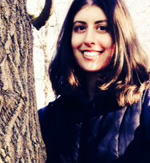As Canada enters flu season, it may seem difficult to care about any other virus, least of all a virus found in 700-year-old frozen caribou dung. But the latter virus, just recently unearthed in the Northwest Territories, was revived from ancient scraps of DNA and has now successfully infected a modern-day tobacco plant.
It started when a team of researchers traipsed into the Selwyn Mountains, chasing artifacts. They suspected that aboriginals had hunted on the ice patches long ago, since caribou gather on them in the summer to seek relief from the heat and mosquitoes.
Their theory paid off. The researchers uncovered stone tools, wooden arrow shafts, and leg-hold traps made of sinew. They also found caribou dung embedded in the layers of subarctic ice. Intrigued, the researchers decided to look deeper. The dung was sent for analysis, and the ancient virus was found and brought back to life.
“Studying the ancient can help us understand the future,” says Brian Moorman, a University of Calgary professor and Fellow of the Royal Canadian Geographical Society. “With these new findings we might be able to understand how viruses evolve over longer periods of time.”
According to Moorman, this vegetarian ‘franken-virus’ is not one we would see in our environment today; rather, it’s an “invasive species from another time.”
This is worrisome to Moorman because half of Canada is underlain by permafrost, and the climate’s rising thermometer could release some prehistoric and potentially harmful microbes and infectious agents.
“As our environment changes, it’s good to know what we have around us, so we can be prepared for how these changes might impact us.”
And changes are happening. One particular ice patch that Moorman and the other researchers stood on three years ago was radiocarbon-dated to be 4000 years old; it has since disappeared.
“It certainly makes us think about what the future will look like.”





